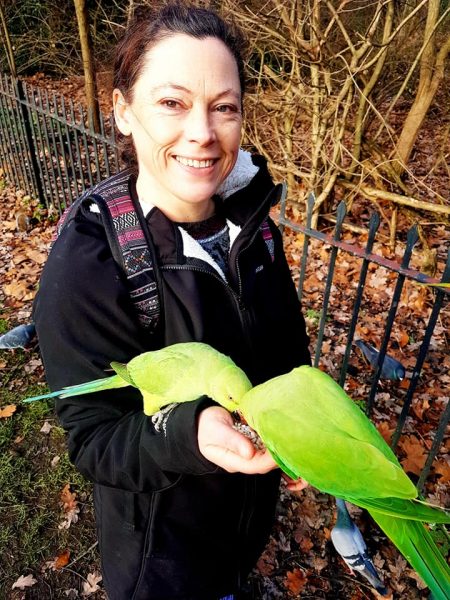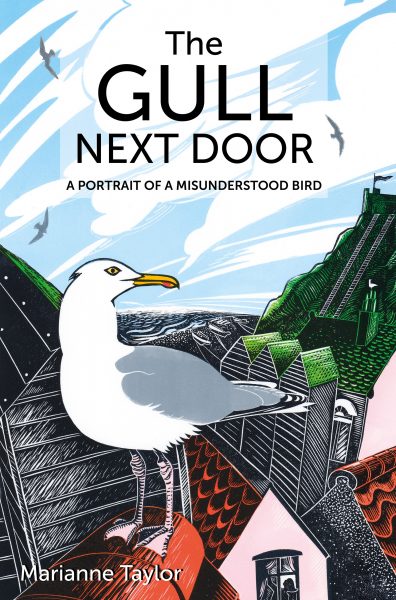An interview with prolific nature writer Marianne Taylor on her book ‘Gull Next Door’ published by Wild Nature Press.
Reproduced with permission from the Quarterly Newsletter (Issue No. 261, February 2021) of the London Natural History Society.
Marianne Taylor has since 2007 worked as a freelance writer, photographer and illustrator, focusing on wildlife and nature and, particularly, British birds. She is a prolific author and her books include RSPB Pocket guide to British Birds, RSPB Garden Birds, The Way of the Hare and Dragonflight. She is also an illustrator and keen photographer.

How did this book come about?
I pitched the idea of a narrative book about gulls to Julie Dando of Wild Nature Press in the autumn of 2015. Having grown up in an English seaside town, I have a lifelong fondness for gulls, and herring gulls in particular – they were our neighbours, and although they were not always the best-behaved neighbours I was won over by their raucous charm from the start. I became aware as a child that my view was not widely shared by the other people of my town, and so I spoke up in their defence more and more. Herring gulls are the central focus of this book but I also talk about other gulls around the world and especially in the UK – their biology, their history of living alongside humankind, and their future.
What do you want to achieve with this book?
I would like to share my love of gulls, by highlighting all that is fascinating and endearing about them. I also want to examine the surprisingly wide range of human attitudes towards, and relationships with, gulls. The phenomenon of ‘larophilia’ – the peculiar passion that a certain type of birder has for seeking out and identifying the trickier gulls, contrasts dramatically with the widely held public perception of gulls as pests, and also with the friendly association – almost a working relationship – between gulls and fishermen.
Is there a fun fact or something amazing about the behaviour or ecology of gulls you want to point out?
The large gulls can live into their thirties. They also usually pair for life. We see gulls as constantly squabbling, argumentative and aggressive but they are in fact paragons of devotion.
Were there any memorable moments during the course of writing this book?
It was more a case of remembering moments past. I have had some lovely encounters with rare and scarce gulls in the UK. Many of the experiences with herring gulls that I describe are from my own childhood but some are much more recent. During the actual writing, I must say that researching angry newspaper stories concerning gulls brought me many moments of absolute hilarity.
For anyone who wishes to pursue this topic more, are there any online resources you would recommend?
For the larophiles – http://www.gull-research.org/ There are many links to other nice gull blogs and pages here!

